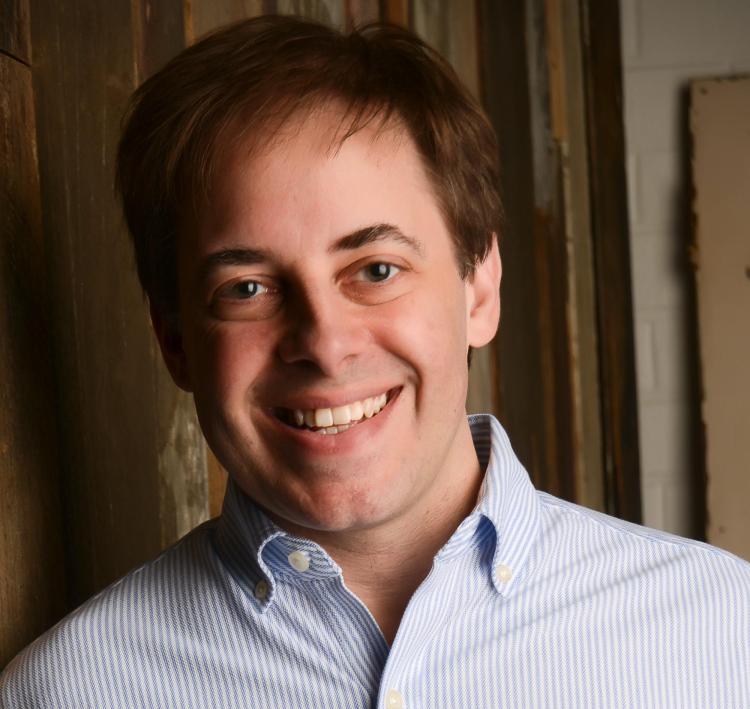Wave of distress mobilizes psychologists
CU Boulder professor co-leads ‘call to action’ for mental-health care during pandemic
The COVID-19 pandemic has taken more than a million lives worldwide and some 220,000 in the United States alone, but it’s much more than a physical threat.
Faced every day with persistent uncertainty about the future, an endless stream of anxiety-producing—and sometimes conflicting—information and the loss of everything from financial security to loved ones, countless people around the world are experiencing increased exposure to stress, anxiety, depression, substance use, even suicide.
But in a cruelly ironic twist, most people have decreased, or no, access to the kind of social interactions and activities known to reduce stress and anxiety.
“We are in an unprecedented time for mental health. COVID has understandably focused a lot of attention on ways to protect our physical health. But it’s come with an emerging wave of serious and costly psychological difficulties that we’ve never seen previously,” says June Gruber, associate professor of psychology and neuroscience and director of the Positive Emotion and Psychopathology Laboratory at the University of Colorado Boulder.

June Gruber of CU Boulder
In March, Gruber and her colleague Mitch Prinstein, John Van Seters Distinguished Professor of Psychology and Neuroscience at the University of North Carolina at Chapel Hill, recognized the powerful role the clinical psychology field could play in addressing the burgeoning crisis.
They sent out a quick tweet, asking other colleagues “if they would like to join this call to action and bring to light challenged that different groups are facing at every time in life.”
“Within a matter of days, Dr. Prinstein and I rallied an author team together unlike any other ever seen in the field,” Gruber says.
They quickly created a shared document online and divvied up topics between 37 academics from top universities across the United States. Astonishingly, the team had a draft of a paper put together in less than three weeks.
“We knew if we didn’t do this now, it might be too late,” Gruber says. “We had a public responsibility to join this conversation in a timely manner.”
“The paper made clear: There was an urgent need for attention towards mental health like never before. People at every age, across every cultural group, and in every region of the world are experiencing severe combinations of stressors all while attempting to avoid a serious illness,” Prinstein says.
By June, the American Psychological Association had published the ad hoc group’s paper, “Mental Health and Clinical Psychological Science in the Time of COVID-19: Challenges, Opportunities, and a Call to Action,” in its prestigious journal American Psychologist—an all-but-unheard-of timeline in academic publishing.
The team identifies three key ways the pandemic is affecting mental health:
- “First, it is long term and widespread, with an uncertain end date; the stakes are high, the disruption to daily routines is severe, and the loss of resources to meet both immediate (e.g., food, cleaning supplies) and future needs (e.g., due to unemployment) is significant.”
- The pandemic is a “multidimensional stressor, affecting individual, family, educational, occupational and medical systems” that “exacerbates political rifts, cultural and economic disparities, and prejudicial beliefs.”
- “The protections needed to safeguard against infection necessarily, but ironically, block access to protective factors that are known to reduce the effects of stress (e.g., enjoyable distractions, behavioral activation, social relationships).”

Mitch Prinstein of UNC Chapel Hill
“If psychologists were asked to create the conditions that would be most stressful, increasing the risk for mental health challenges among the greatest number of people, it would probably look a whole lot like what we are experiencing now,” Prinstein says.
The paper examines how the pandemic may be affecting the mental health of different age populations. For example, adolescents and young adults may experience disruption of peer relationships and loss of autonomy, while many adults face threats to economic security even as they try to adapt to becoming home-school educators; and seniors may have lost critical social support and be especially vulnerable if they are living with dementia or other cognitive issues.
“COVID-19 spares no one in terms of mental-health repercussions,” Gruber says.
The researchers identified two populations that need particular attention: health-care workers and members of marginalized racial and ethnic groups.
“There are many open questions about the extent to which COVID-19 health care workers may develop a range of emotional disorders, from ‘simple’ burnout to depression and PTSD,” they write.
Meanwhile, scapegoating of immigrants and other perceived outgroups tends to rise during a pandemic, and the pandemic has disproportionately affected members of racial and ethnic minority groups and people from lower socioeconomic backgrounds.
“There is a massive need to address stigma and racism, dark sides of society that are very much detrimental to mental health,” Gruber says.
In another cruel irony, the pandemic makes delivery of mental-health services more challenging. For example, most client meetings are now by necessity taking place remotely, aka “telehealth,” raising concerns about privacy, decreased opportunities to establish a clinician-client connection and access to services, since not everyone has private space or high-quality internet connections.
“Telehealth cannot replace the in-person interaction and alliance between therapist and patient,” Gruber says.
But, she notes, it’s here to stay, and it also offers opens up potentially rich new areas for research and clinical practice. For example, the paper argues that mass-delivered, shorter-term interventions should become a priority in both research and clinical practice moving forward.
We knew if we didn’t do this now, it might be too late ... We had a public responsibility to join this conversation in a timely manner.”
“This includes, as one well-studied example, single-session interventions (SSIs): structured, evidence-based interventions that require just one encounter with a provider or program,” they write. “Evidence suggests that SSIs can reduce or prevent psychopathology in youths and adults, and are effective in treating self-harm, depressive symptoms and conduct problems.”
Recognizing that the pandemic has exposed countless vulnerabilities in the mental-health services system, Gruber and her co-authors wrote and published the article as a call to action in a perilous time.
“There is a massive worldwide coordinated effort to stop the spread of a physical illness involving multiple areas of expertise, and enormous funding. Sadly, no such effort is underway to address significant mental health difficulties that are being experienced by even more people than those who have tested positive for COVID. It is time for a change,” Prinstein says.
“COVID-19 is a reality check for the field,” Gruber says. “The chronic stress is bringing to light a lot of pre-existing vulnerabilities and the onset of new vulnerabilities. Everyone is going through this, so it’s no wonder that we are seeing increased rates of depression, anxiety and addition. That’s why we wrote this paper.”

